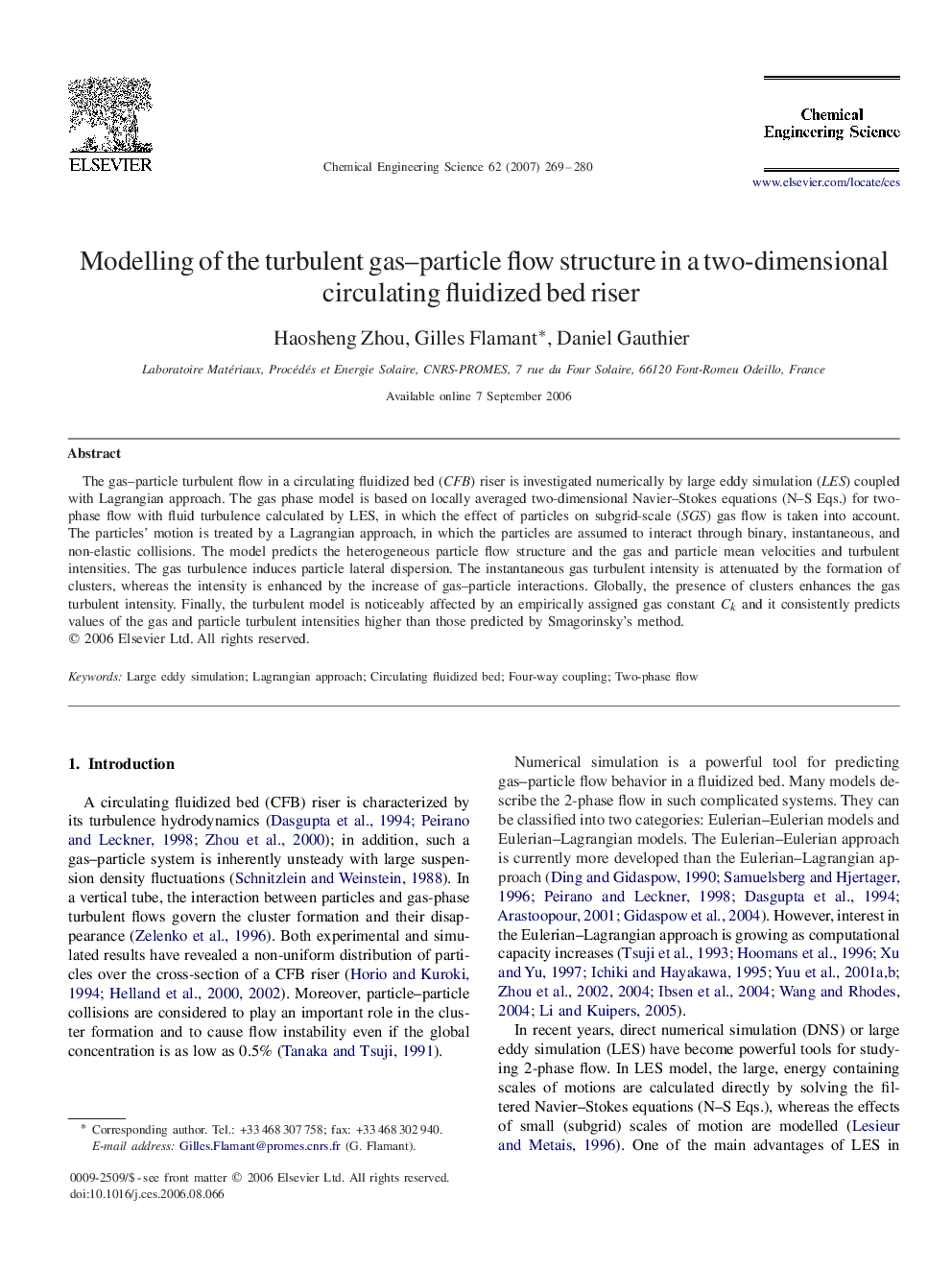| Article ID | Journal | Published Year | Pages | File Type |
|---|---|---|---|---|
| 160360 | Chemical Engineering Science | 2007 | 12 Pages |
The gas–particle turbulent flow in a circulating fluidized bed (CFB) riser is investigated numerically by large eddy simulation (LES) coupled with Lagrangian approach. The gas phase model is based on locally averaged two-dimensional Navier–Stokes equations (N–S Eqs.) for two-phase flow with fluid turbulence calculated by LES, in which the effect of particles on subgrid-scale (SGS ) gas flow is taken into account. The particles’ motion is treated by a Lagrangian approach, in which the particles are assumed to interact through binary, instantaneous, and non-elastic collisions. The model predicts the heterogeneous particle flow structure and the gas and particle mean velocities and turbulent intensities. The gas turbulence induces particle lateral dispersion. The instantaneous gas turbulent intensity is attenuated by the formation of clusters, whereas the intensity is enhanced by the increase of gas–particle interactions. Globally, the presence of clusters enhances the gas turbulent intensity. Finally, the turbulent model is noticeably affected by an empirically assigned gas constant CkCk and it consistently predicts values of the gas and particle turbulent intensities higher than those predicted by Smagorinsky's method.
